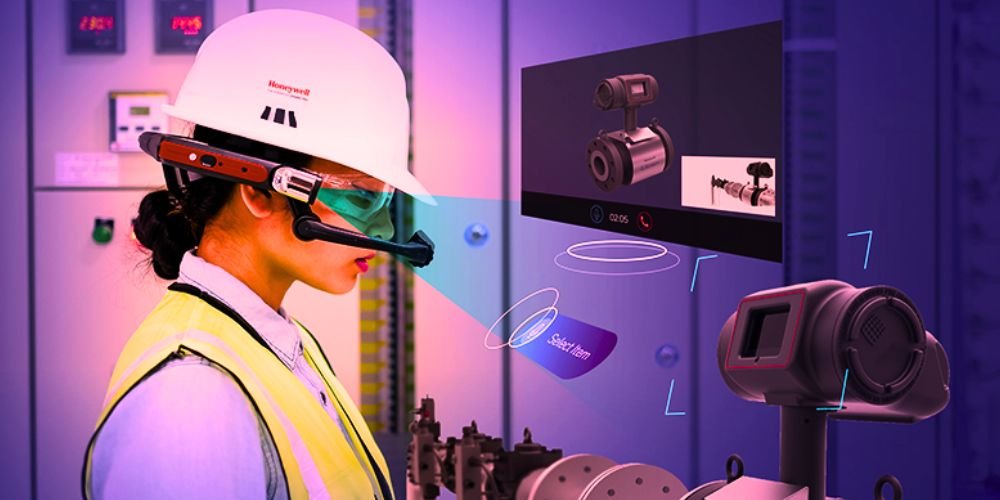Wearable technology is revolutionizing the construction industry by providing innovative solutions to enhance safety, productivity, and efficiency on job sites. This article explores wearable technology’s applications, benefits, and future trends in construction, showcasing its potential to transform how construction projects are planned and executed.
Understanding Wearable Technology in Construction
Wearable technology in construction refers to integrating smart devices, sensors, and wearable gadgets into personal protective equipment (PPE) worn by construction workers. These devices collect data in real-time, offering insights into worker health and safety and improving communication and workflow management on construction sites.
Safety Monitoring and Alerts
Wearable sensors can monitor vital signs such as heart rate, body temperature, and fatigue levels in construction workers. In an emergency or health issue, these devices can send alerts to supervisors or trigger alarms, enabling prompt response and potentially preventing accidents or injuries on the job site.
Ergonomic Assessment and Injury Prevention
Wearable technology can assess workers’ posture, movements, and ergonomic conditions to identify potential risks for musculoskeletal injuries. By providing real-time feedback and guidance, these devices help workers maintain proper posture, avoid repetitive strain injuries, and improve overall ergonomics, leading to a safer and healthier work environment.
Communication and Collaboration
Wearable devices with communication features like voice commands or text messaging facilitate real-time communication and collaboration among construction teams. Workers can communicate hands-free, access project information, and receive instructions or updates from supervisors, improving workflow efficiency and coordination on the job site.
Advantages of Wearable Technology in Construction
Wearable technology offers numerous advantages to construction companies, including improved safety, enhanced productivity, and reduced risk of accidents or injuries.
Enhanced Safety and Risk Mitigation
Wearable technology helps construction companies identify and mitigate potential risks or hazards on job sites by monitoring workers’ health and safety conditions. Proactive safety measures, such as early detection of fatigue or heat stress, enable supervisors to intervene promptly and prevent accidents before they occur, ensuring a safer work environment for all workers.
Increased Productivity and Efficiency
Wearable devices with productivity tracking features can monitor workers’ activities and performance metrics, such as time spent on tasks or completed work units. This data allows construction managers to identify inefficiencies, optimize workflows, and allocate resources more effectively, ultimately improving project productivity and profitability.
Compliance and Documentation
Wearable technology can streamline compliance with safety regulations and documentation requirements in the construction industry. By automatically recording and documenting safety incidents, training sessions, or equipment inspections, wearable devices help construction companies maintain accurate records, demonstrate compliance with regulatory standards, and minimize liability risks associated with accidents or injuries.
Applications of Wearable Technology in Construction
Wearable technology has diverse applications across various construction activities, including safety monitoring, tracking productivity, and training and development.
Personal Safety and Hazard Detection
Wearable sensors can detect hazardous conditions, such as exposure to high temperatures, hazardous gases, or noise levels above safe limits. Workers receive real-time alerts or warnings, allowing them to take immediate action to mitigate risks and protect their health and safety on the job site.
Task Management and Workflow Optimization
Wearable technology can improve task management and workflow optimization by giving workers real-time access to project schedules, instructions, and task lists. Workers can prioritize tasks, track progress, and communicate with team members more efficiently, resulting in smoother project execution and improved productivity.
Training and Skills Development
Wearable devices can support training and skills development initiatives in the construction industry by providing on-the-job training modules, instructional videos, or virtual reality simulations. Workers can access training materials hands-free, allowing them to learn new skills or procedures while performing their regular duties, ultimately improving workforce competency and performance.
Future Trends in Wearable Technology in Construction
The future of wearable technology in construction is marked by advancements in sensor technology, artificial intelligence, and augmented reality, as well as increased integration with construction management systems.
Advanced Sensor Technology
Advancements in sensor technology, including miniaturization, increased sensitivity, and reduced power consumption, will drive the development of more advanced wearable devices for construction applications. Smaller, more affordable sensors will enable the integration of wearable technology into a wider range of PPE, providing workers with more excellent safety and performance monitoring capabilities.
Artificial Intelligence and Machine Learning
Integrating artificial intelligence and machine learning algorithms will enable wearable devices to analyze data more intelligently and provide more personalized insights and recommendations to construction workers and supervisors. AI-powered analytics platforms can identify trends, predict potential risks, and suggest preventive measures to improve safety and productivity on construction sites.
Augmented Reality and Heads-Up Displays
Augmented reality (AR) technology will enhance the capabilities of wearable devices by providing workers with real-time information and visualizations overlaid in their field of view. Heads-up displays (HUDs) integrated into safety helmets or goggles can display project plans, equipment manuals, or safety warnings, allowing workers to access critical information hands-free while performing tasks.
Conclusion
Wearable technology is transforming the construction industry by offering innovative solutions to improve job site safety, productivity, and efficiency. Wearable devices enhance worker safety, optimize project workflows, and drive operational excellence in construction projects by providing real-time monitoring, communication, and training capabilities. As technology continues to evolve and industry adoption grows, wearable technology will play an increasingly important role in shaping the future of construction and ensuring the well-being and success of construction workers worldwide.










